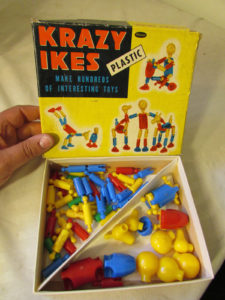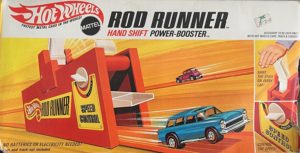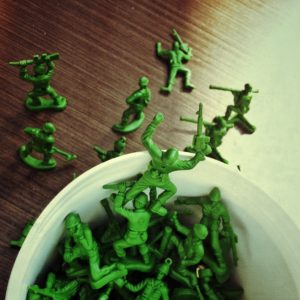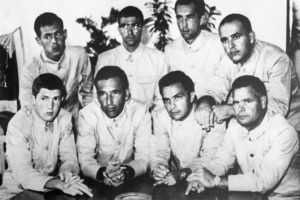
The space race was one of the most exciting thigs we Boomers remember from our youth. Charismatic President Kennedy said we were going to land a man on the moon by the end of the 1960’s decade! And we thought we could do it!
We kids were as excited as our parents. We loved hearing the beeps whenever Mission Control would communicate with the astronauts. We loved spacewalks, liftoffs, splashdowns, all aspects of the space program.
Mattel took the hint, and in 1967, in time for Christmas, introduced Major Matt Mason.
Originally, the toy was intended to showcase actual vehicles that NASA was designing. Soon, though, more fanciful modes of transportation were offered.
The toy was a huge hit, and its popularity matched that of the space program itself. That would prove to be fateful.
Mason himself was a little guy, smaller than GI Joe, But that was okay. GI Joe didn’t have a Space Station. Joe’s ultimate accessory was the Space Capsule. While it was mighty impressive, it just came up a bit short when compared to the Station.
It was a two-level structure that could be boarded by means of ladders on the sides. It had panels that would close to keep out the harsh solar radiation. you could mount the crawler on it so it would function as a winch. It was just the stinkin’ coolest toy an eight-year-old boy could get his hands on.

That is, IF you could get your hands on one. Sadly, I never owned MMM. But I had a buddy who had nearly every accessory, including fellow astronauts Sergeant Storm, Doug Davis, and Jeff Long.
That crawler was something else. Battery powered, it would make its way over practically any obstacle. However, I suspect that Major Mason had some pretty bad lower back pain late in life. That thing didn’t look like a very comfortable ride.
The love for the space program climaxed on July 20, 1969, when we proved JFK to be a prophet. America went absolutely giddy over men actually walking on the moon, except, of course, for those who say it was all fake.
But the next landing wasn’t so exciting. The next, even less. NASA’s budget soon began to be slashed as Americans demanded more tax money be spent on problems on this planet.
As we got bored with space missions, Major Matt Mason’s sales plummeted. 1970 was the last year you could buy Major Matt Mason and his gadgets.
Today, of course, they can all be found on eBay, but at prices considerably higher than in our childhood. MMM is one of the most collectible toys.
But it’s just not the same when your bedroom turned into a miniature moon base.


















